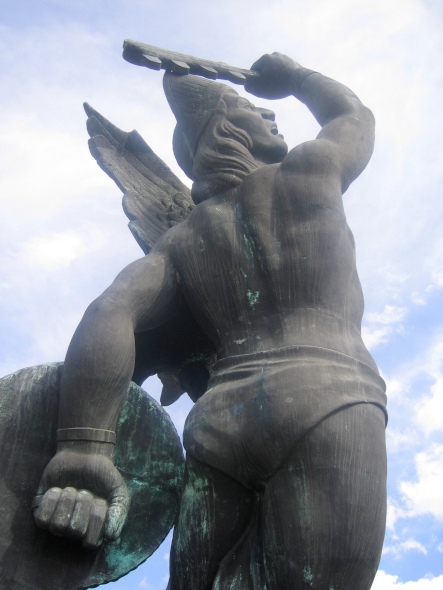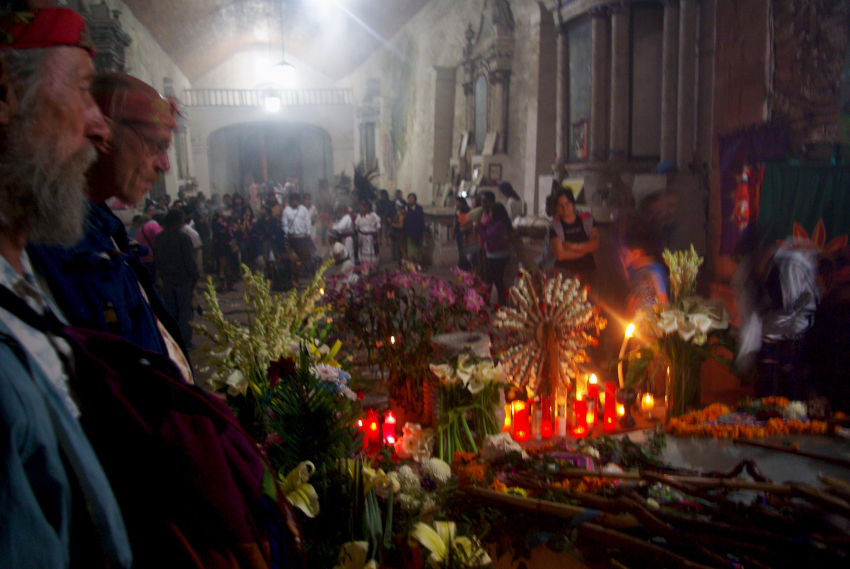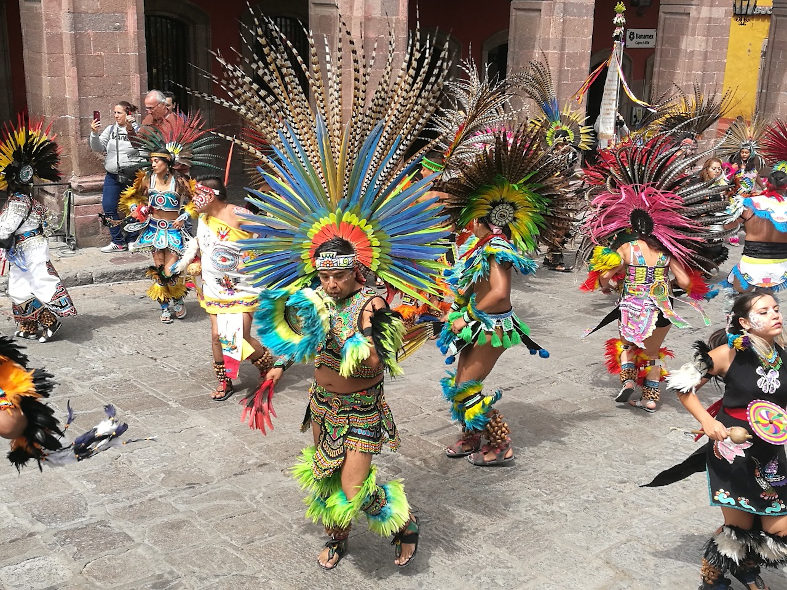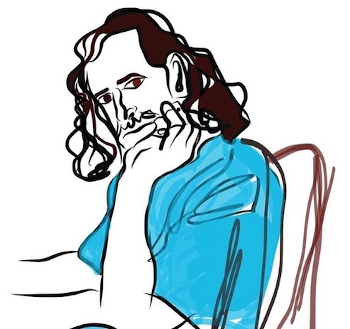by Carlos Aguila
Two weeks ago as I walked toward the Jardin in San Miguel, I could hear some drumming in the distance. As I got nearer, the rhythm and the intensity grew and I realized I had felt this power before in a small town called Ixcateopan de Cuauhtémoc.
Cuauhtémoc was the last Aztec Emperor of Tenochtitlan. He was tortured and eventually killed by Cortez in 1525.

According to legend, after the Spaniards killed him, his body was stolen by locals and hidden, buried under the altar of the Catholic church in Ixcateopan. In the mid-1900s, the bones were rediscovered. The church was converted into a museum and the skeletal remains put on display under a glass case.
A few years back I had the privilege to be in Ixcateopan at the end of February when his birth and death are commemorated. Each year the shamans or elders of the surrounding communities bring their ceremonial staffs to the town via a relay run. I was part of a group of runners that carried one staff, trading off every half kilometer or so. As each group arrived at the old church, they placed their staff upon the glass case to gather strength and absorb power throughout the night.

Dancers and drummers filled the small chapel. Offerings of food and flowers were beautifully arranged on the floor. The air was filled with the smoke and smell of copal incense. Conch shells were blown and the pounding of the drums pierced my body. The dancers wore incredible feathered headdresses and ankle bracelets that rattled with every step. They danced for hours to a repetitive beat, twirling, leaping and bowing towards the remains of Cuauhtémoc. Men, women and children were all dancing together and each brought their own sense of sacredness and honor to the space. As one lead dancer tired, another took their place and the dance continued throughout the night.
The next day, the staffs were returned to the villages and by doing so, their strength of ethnicity and spiritual connections to the ancestors are renewed each year.

I was told that the dancers come to the Jardin the first Friday in March because their ancestors are buried under the colonial buildings there. They are also there to celebrate El Señor de La Conquista, a local event that honors a 500 year old statue of Jesus that is housed in the Parroquia. These two alternate descriptions show the paradox of Mexico. The brutality of the conquest with the suppression of native culture and the adoption of Christ as Savior.
The dances and the drum beat predate the arrival of the Spaniards. They are a common source of pride, heritage and connection with ancestors among the indigenous peoples of the world. The next time you focus on these feathered dancers, look not through the lens of your camera, but rather through the eyes of your soul. Feel the drumbeat reverberate through your body and let it carry you back through time.
**************

Carlos Aguila is a semi-retired organic farmer living on Salt Spring Island in British Columbia. He has been coming to Mexico since he was fourteen. His plan is to spend more time in San Miguel de Allende. Right now he is keeping his wood stove burning, throwing sticks for his dog, and staying away from people.
